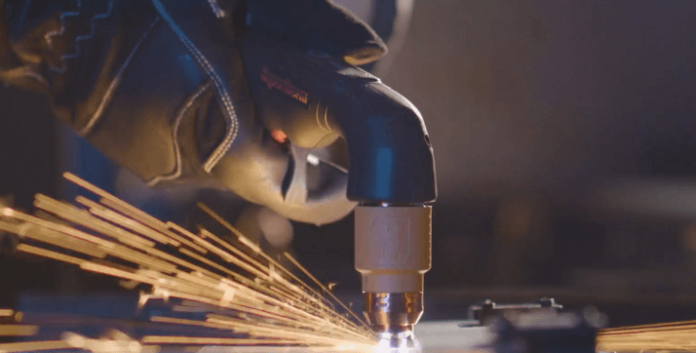The Hypertherm plasma cutter is renowned for its precision, efficiency, and durability in cutting a wide range of metals. Understanding the different parts of the Hypertherm plasma cutter is essential for users who want to maximize its potential and ensure its longevity. In this comprehensive guide, we will delve into the various components that make up a Hypertherm plasma cutter and explain their functions and importance.
Power Supply
The power supply is the heart of the Hypertherm plasma cutter. It converts AC voltage from the power source into the DC voltage necessary for plasma cutting. This component regulates the flow of electrical energy to ensure a steady and precise arc. Hypertherm plasma cutters are known for their reliable and efficient power supplies, which contribute to consistent cutting performance.
Key Features:
- Voltage Regulation: Ensures stable and consistent power output.
- Efficiency: Designed to minimize energy consumption while maximizing cutting performance.
- Durability: Built to withstand harsh industrial environments.
Plasma Torch
The plasma torch is the component that directs the plasma arc to the workpiece. It consists of several sub-components that work together to produce and control the plasma jet. Hypertherm plasma torches are engineered for high precision and durability, making them suitable for a wide range of cutting applications.
Key Sub-Components:
- Electrode: Conducts the electrical current and helps generate the plasma arc.
- Nozzle: Shapes and constricts the plasma jet for precise cutting.
- Shield: Protects the nozzle and workpiece from molten metal spatter.
- Swirl Ring: Controls the flow of gas around the electrode to ensure a stable arc.
Gas Console
The gas console regulates the flow of gases used in the plasma-cutting process. Depending on the material being cut and the desired quality of the cut, different types of gases (such as air, nitrogen, oxygen, and argon) can be used. The gas console ensures that the right gas mixture and pressure are delivered to the torch.
Key Features:
- Gas Selection: Allows users to choose the appropriate gas for their specific cutting needs.
- Pressure Regulation: Ensures the correct gas pressure is maintained for optimal cutting performance.
- Flow Control: Regulates the amount of gas flowing to the torch to maintain a consistent plasma arc.
Coolant System
For plasma cutters that use liquid cooling, the coolant system is crucial for maintaining the temperature of the torch and other components. The coolant system circulates a cooling liquid (usually water or a water-based coolant) through the torch to prevent overheating and extend the life of consumable parts.
Key Features:
- Cooling Pump: Circulates the coolant through the system.
- Heat Exchanger: Dissipates heat from the coolant to keep it at an optimal temperature.
- Coolant Reservoir: Stores the coolant and allows for easy refilling and maintenance.
Control Panel
The control panel is the user interface of the Hypertherm plasma cutter. It allows operators to set and adjust various parameters such as cutting speed, amperage, and gas flow. Modern Hypertherm plasma cutters feature digital control panels with intuitive displays and easy-to-use controls.
Key Features:
- Digital Display: Provides real-time feedback on cutting parameters and system status.
- Parameter Adjustment: Allows users to fine-tune settings for different cutting applications.
- Diagnostic Tools: Helps troubleshoot issues and perform maintenance tasks.
Consumables
Consumables are the replaceable parts of the plasma torch that wear out over time due to the intense heat and electrical energy involved in plasma cutting. Regular inspection and replacement of consumables are essential to maintain cutting quality and prevent damage to other torch components.
Read also Ward-off Cancer, Reduce Risk of Diabetes, and Lower Blood Pressure With Your Cup of Tea
Common Consumables:
- Electrodes: Wear out over time and need regular replacement to maintain arc stability.
- Nozzles: Can become damaged or worn, affecting cut quality and precision.
- Shields and Retaining Caps: Protect the torch and other consumables from damage and need periodic replacement.
Work Cable and Ground Clamp
The work cable and ground clamp are essential for completing the electrical circuit during plasma cutting. The ground clamp is attached to the workpiece, providing a path for the electrical current to return to the power supply, ensuring a stable and controlled plasma arc.
Key Features:
- Durability: Designed to withstand high currents and harsh cutting environments.
- Secure Connection: Ensures a stable electrical connection for consistent cutting performance.
- Flexibility: Allows for easy maneuvering and positioning of the ground clamp on the workpiece.
CNC Interface
For automated plasma cutting systems, the CNC (Computer Numerical Control) interface is a crucial component. It allows the plasma cutter to be integrated with a CNC machine, enabling precise and automated cutting operations. Hypertherm plasma cutters are compatible with a wide range of CNC systems, making them versatile tools for industrial applications.
Key Features:
- Precision Control: Enables accurate and repeatable cutting operations.
- Integration: Compatible with various CNC machines and software.
- Automation: Reduces manual intervention and increases productivity.
Cutting Table
The cutting table provides a stable surface for supporting the workpiece during plasma cutting. It is typically equipped with slats or grids that allow the plasma jet to pass through without damaging the table. Some cutting tables also feature water trays to capture sparks and reduce smoke and dust.
Key Features:
- Stability: Provides a secure platform for the workpiece.
- Ventilation: Allows for effective smoke and dust management.
- Versatility: Can accommodate different workpiece sizes and shapes.
Software
Hypertherm plasma cutters often come with advanced software for controlling and optimizing the cutting process. This software can be used to design cutting patterns, adjust parameters, and monitor system performance. Hypertherm’s software solutions are designed to enhance productivity and cutting quality.
Key Features:
- Design Tools: Allows users to create and modify cutting patterns.
- Parameter Optimization: Helps fine-tune settings for different materials and thicknesses.
- Performance Monitoring: Provides real-time feedback on system performance and diagnostics.
Maintenance and Troubleshooting
Understanding the parts of the Hypertherm plasma cutter is important for operation, maintenance, and troubleshooting. Regular maintenance of components such as the torch, consumables, and coolant system can prevent downtime and extend the cutter’s life. Troubleshooting common issues, such as inconsistent arc or poor cut quality, often involves inspecting and replacing worn consumables, checking the gas flow, and ensuring proper grounding.
Tips for Maintenance:
- Regular Inspections: Check consumables, cables, and connections for wear and damage.
- Clean Components: Keep the torch and other parts free from debris and contaminants.
- Replace Consumables: Regularly replace worn consumables to maintain cutting performance.
- Monitor Coolant Levels: Ensure the coolant system is functioning properly and coolant levels are adequate.
Conclusion
The Hypertherm plasma cutter is a sophisticated tool composed of various parts that work together to deliver precise and efficient cutting performance. Understanding these components and their functions is essential for users who want to get the most out of their Hypertherm plasma cutter. By maintaining and properly operating each part, users can ensure reliable performance and extend the life of their cutting equipment.
Whether you are a seasoned professional or a novice user, familiarizing yourself with the parts of the Hypertherm plasma cutter will help you achieve the best results in your cutting projects. With its advanced technology and robust design, the Hypertherm plasma cutter remains a top choice for those seeking high-quality plasma cutting solutions.


